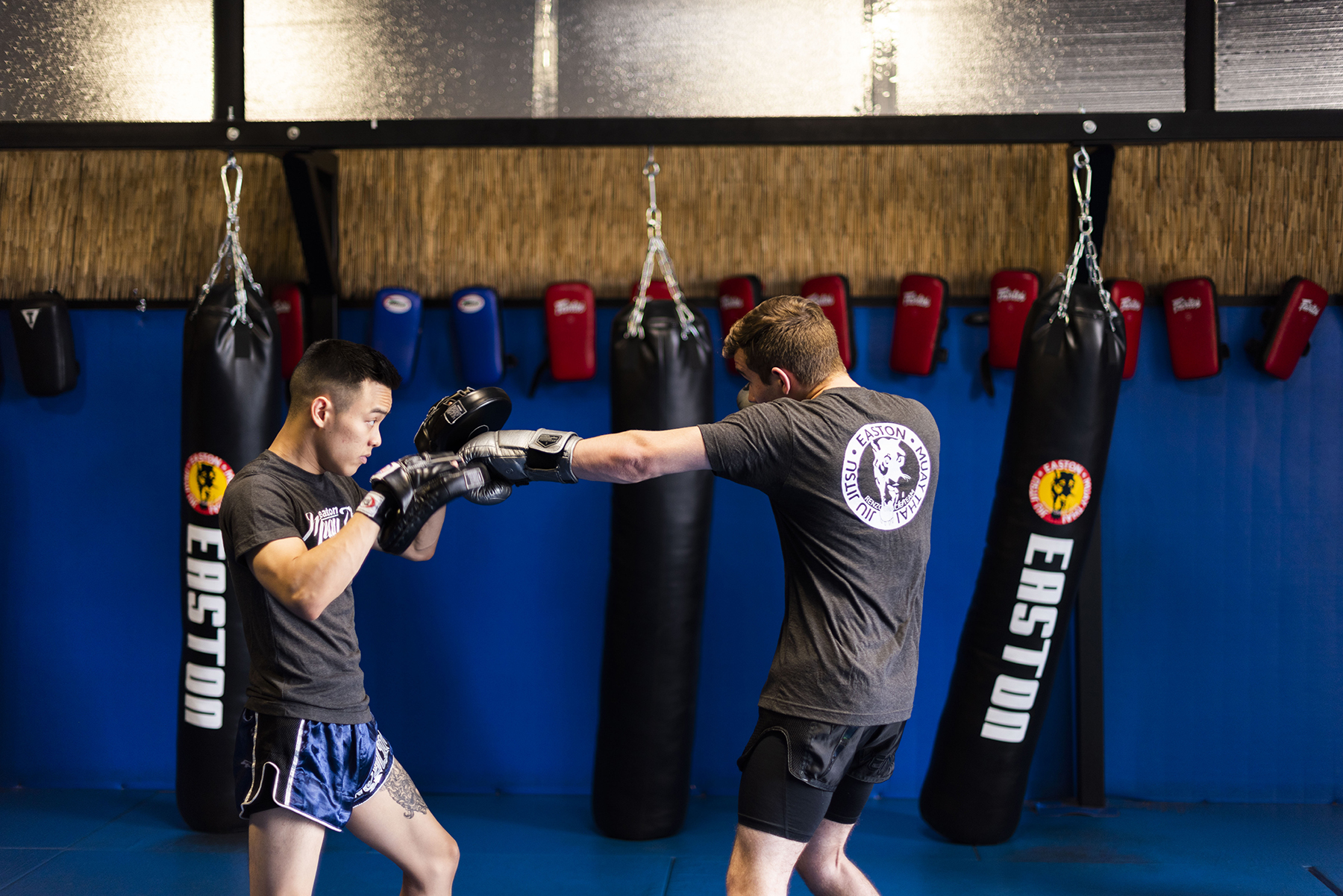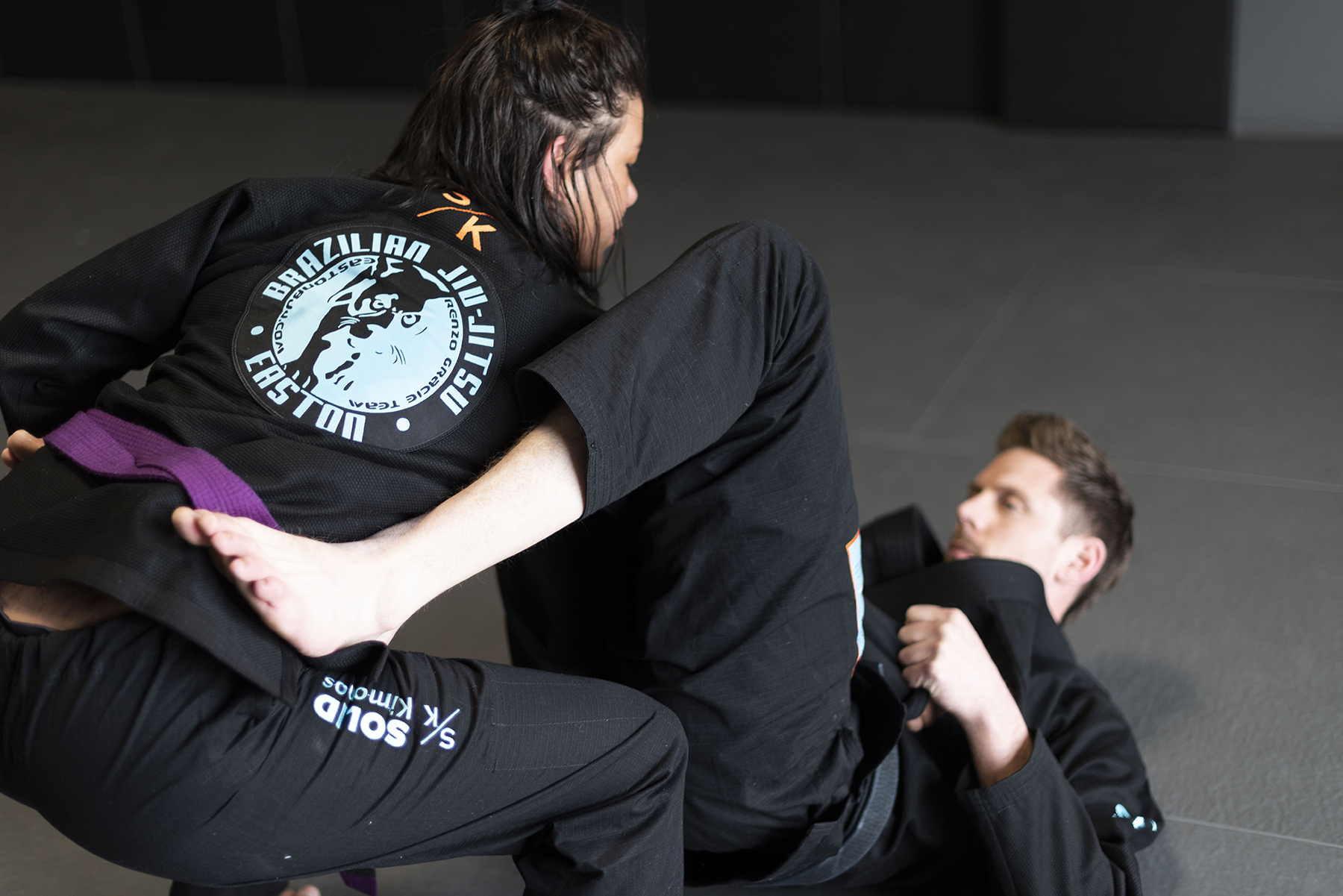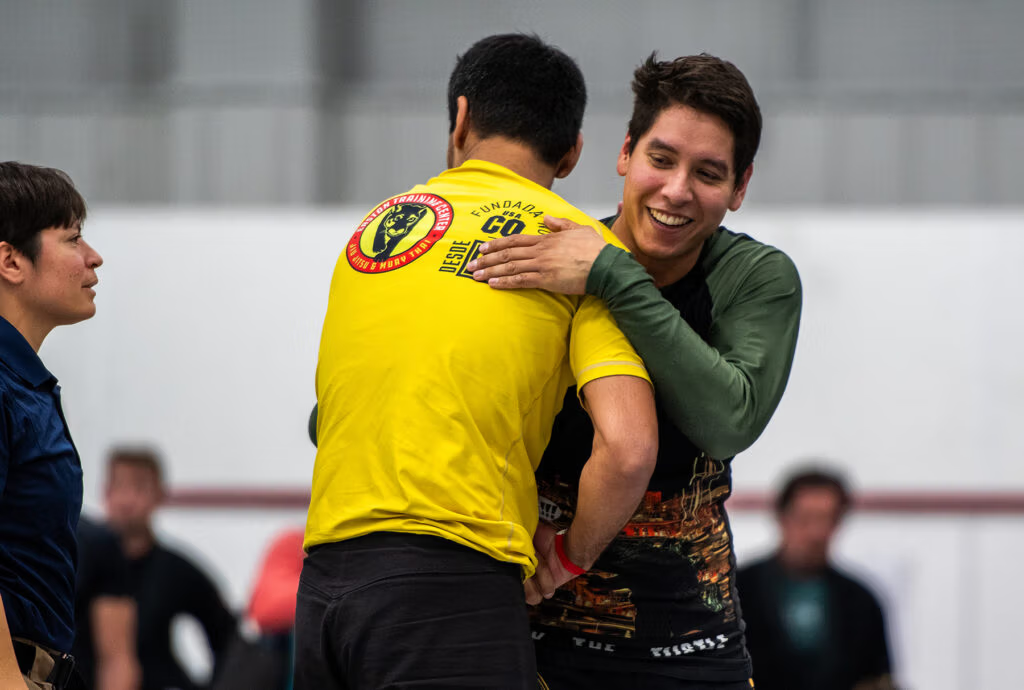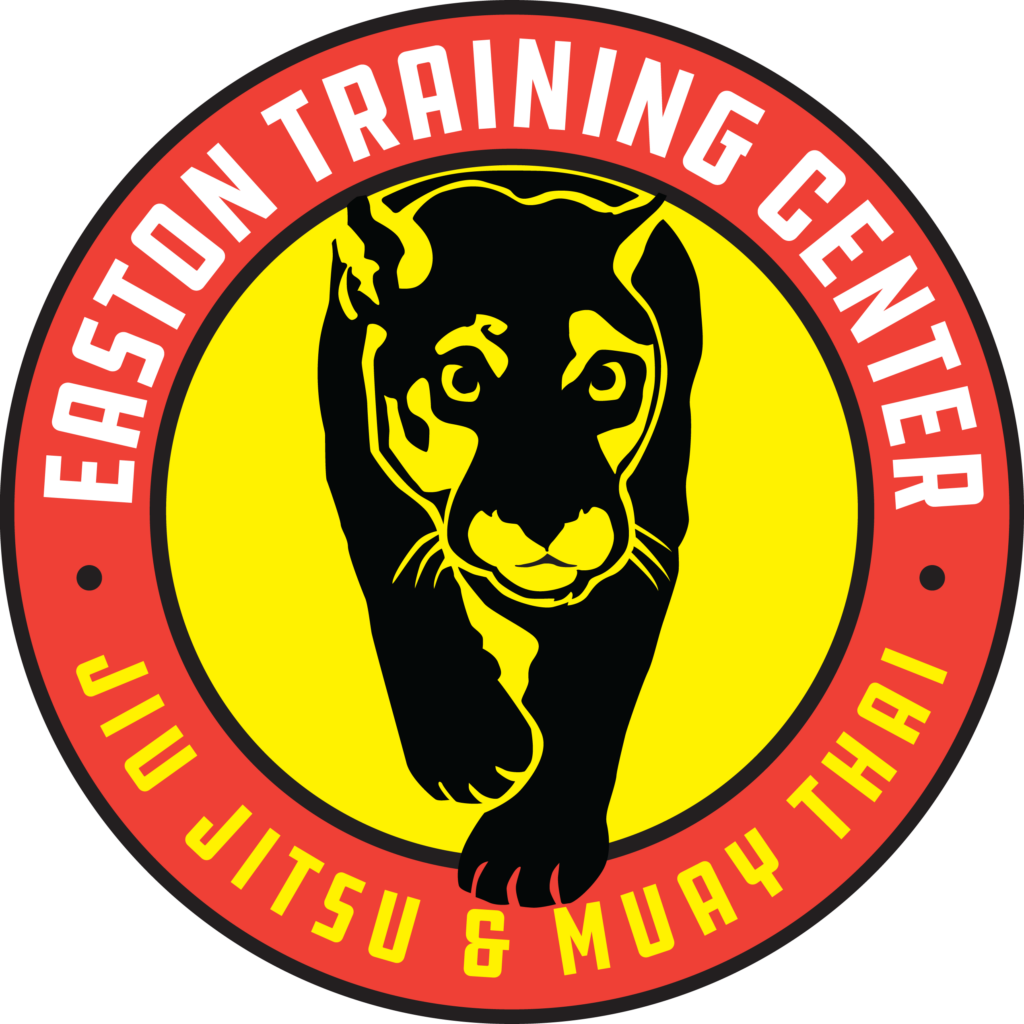You’re at the bottom of mount, and the pressure’s on. Your partner sits on your stomach, you can feel your ribcage compress. Your options are slim, you have to get out. You bridge into them to create a small gap between yourself and the floor, then you turn on your side to shrimp.
More pressure meets you as your partner defends.
Nothing. Still stuck. You try again, over and over, making the most incremental progress until you gather enough momentum for a slightly larger gap. You turn and shrimp, scooting your hips as far out as you can, clear their leg and get to a knee as you wiggle your other leg free.
One of the most important, fundamental functions of both Jiu Jitsu and Muay Thai as self defense lies in their ability to help you create space for yourself.
These sports inlay force with mobility, logic and leverage to push someone off or give you a little wiggle room to get away. Logically, it’s simple: put as much space as you can between yourself and the danger.

In BJJ, we use our elbows and knees to create space by forming what we call frames, and then establishing a guard, and we use our hips and lats in methods like bridging and shrimping to scoot out from under pressure.
In Muay Thai, we use teeps and push kicks to keep people back, as well as knees and elbows to get in between yourself and your opponent, pushing them back, and creating openings for you to enter.
Creating space doesn’t always come easy. Sometimes the pressure on us is so great that we feel immobilized beneath the weight, stuck between the floor and the full weight of our partner.
As impossible as it feels, as long as they haven’t made that decisive final move that takes you from stuck to check-mate, you still have hope.
In these tightly compressive moments, sometimes we can only make the tiniest, most minute changes. If executed correctly, however, these tiny changes can lead to that one big shift you want. (I.e. If you have to bridge and shrimp, you bridge first and then shrimp. If you do those two moves at the same time, it doesn’t work.)
Trust the process and keep doing it. If you try to work against the logic of physics, you’ll just tire yourself out and your partner will gladly use the opportunity to submit you.

The order of operations is where class comes in – weekly repetition and drilling can get you to where these movements are second nature, and instructors can correct your form and help you improve your technique.
When you know the rules of the game, you can begin to play it smart.
Where to find the space
Martial arts teaches us to face our problems head on. While Muay Thai incorporates more zones of combat than the close-combat grappling style of Jiu Jitsu, certain moves like the clinch make a prime example of how getting to the heart of something, taking over that space, gains you the control you want. When you’re on the receiving end, the only way to get out and free yourself is to take back that control and recover the space.
However, even when we do the right technical movements, in reality it’s not always that easy. Sometimes, trying to make space can get us nowhere and just seems to exhaust us.
For Easton student and Arvada blog writer Sarah Maureen, it becomes an exercise in surrender.
“Sometimes, we have to wait for movement to take advantage of it,” says Sarah. “That means surrendering control for a moment and instead using that energy to focus on tiny movements and changes in our opponent.”
In a moment of compression, Sarah sees two options: pull out and simplify, or surrender and refocus. By becoming hyper-aware of all the tiny things shifting around her, she can use them to her advantage against her opponent, shifting and flowing with them in a way that moves her along.
“Big reactions and pushback waste energy,” says Sarah. “They only get me further from my goal. There’s a Danish word, pyt. It basically means, ‘well… shit. So it is.’ Sometimes we have to accept (pyt), endure, and tune in rather than act out.”
You may not be able to do or move a lot, but if you remain calm, settle in and look for tiny spaces and adjustments, you can gradually create enough space to shift the paradigm.

The key is patience; if you gas yourself out in the first few moments trying to use force against physics, you won’t last. If you slowly increase your space capital bit by bit, you can conserve your energy and develop a more sustainable practice.
At Easton Arvada, Coach JT Baerwolf has begun working with students outside of class to increase their comfort levels. He takes them through progressions such as first being mounted, then a pressure-heavy mount, and finally a crushing mount.
By getting acclimated to the pressure of mount, you can learn to overcome the initial discomfort and get straight to planning your escape. Consider it exposure therapy!
If you find you’re still tapping quickly after you’ve been mounted before the submission even hits, talk to your coach. They could work with you on getting more comfortable with the various pressures in mount, helping you keep control of your breath and put together an escape.
Tiny adjustments for big shifts
Just as pressure can compound on the mat, so does it in life. Between our responsibilities, goals and obligations, it can feel crushing at times. The pressure can feel physically draining, debilitating and definitely impacts our ability to function at the highest level.
Maybe you have a project you keep kicking down the road because life stays too busy, or you haven’t worked out in weeks because the job and kids demand so much of your time. How much of that comes down to physical scheduling and time constraints, and how much really stems from the mental weight?
To regain that control of your own time, schedule and space, the best mode of operation might include making the tiniest adjustments to create the space you need to fully operate, bit by bit.
What can you alter or rearrange so that you can welcome a bit more free space? What patterns or habits can you shift to make room for new ones? Do you need to cut some things out – or simply tighten up your time management?

[The Cost of Leadership and Growing]
Every adjustment, even the smallest ones, count. Are you drinking water? Are you taking thirty minutes to yourself in the morning before diving into the day or into your phone?
If the feeling of being internally crushed comes from a friend, partner, or a misplaced authority that believes it “knows better,” the task becomes to separate yourself from this energy. In these moments, it’s space within your own self you need to create so you can push out external noise.
While you may want to fight back or act out, refocus on the quieter pieces of the puzzle to see the whole picture more clearly.
All of us have wanted to give up at some point, but these moments show us where we need to show up the strongest – not flop over and tap out. You’re only stuck, not submitted. You can still make decisions, and bit by bit, depending on what you choose, set yourself free.

The more you make the small adjustments, the easier the big ones come. You’ll be climbing out from under the crushing pressure and telling it who’s boss in no time.
Just as you can’t predict what pressures you’ll face in life, you can’t change how somebody else operates in the world and how they make you or others feel. You can, however, learn to work with your own reactions, both internally and externally. If you can learn how to stay cool under pressure, perhaps you can even respond in a way that sets a boundary, giving you both the emotion and physical space you need.








